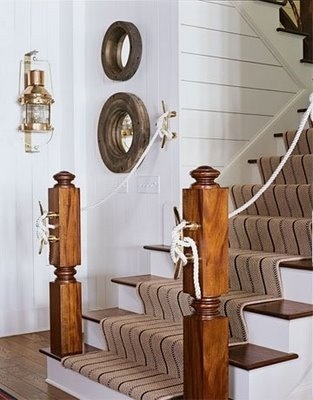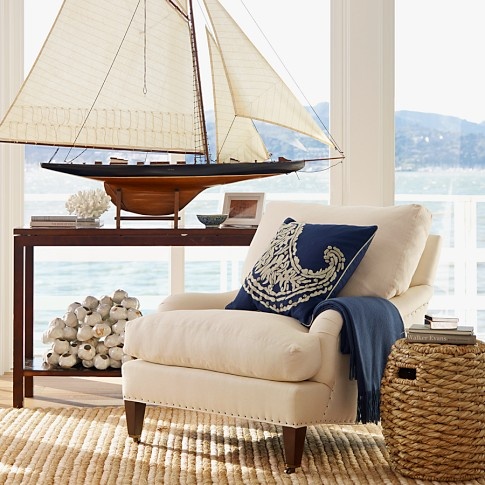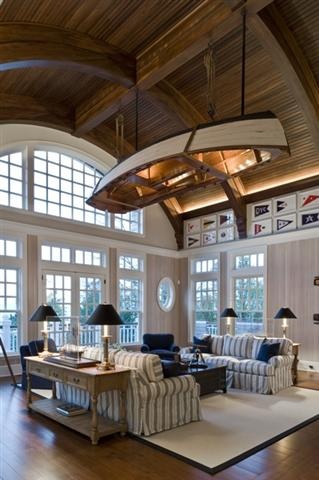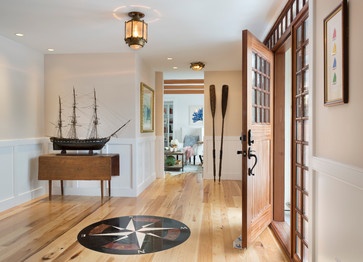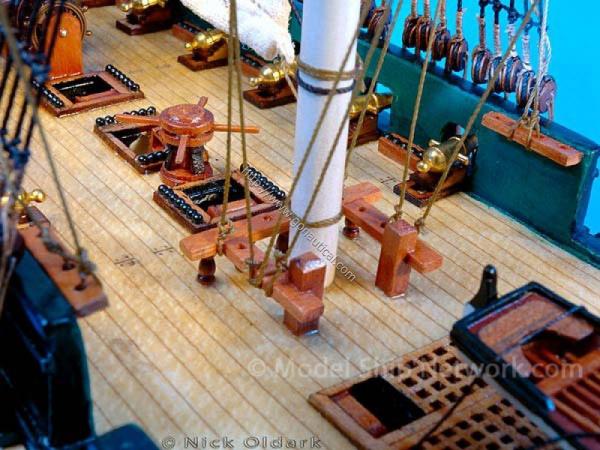History: » USS Monitor
The USS Monitor was the first commissioned ironclad ship by the United States Navy. Her fame comes mainly from her participation in the naval battle between two iron warships. The battle was called the CSS Virginia Battle of Hampton Roads and occurred on March 9, 1862 during the American Civil War. In this battle, Monitor fought with the from the Confederate States Navy. The Monitor was the first to battle the Virginia when it comes to iron ship battles. The term “monitor” refers to a broad class of European defense ships. He ironclad ships, however, were a recent innovation that started with the French battleship La Gloire in 1859. After the invention of the ironclad warships, the design of ships and nature of the naval battles changed drastically and forever.
The USS Monitor was one of the three ironclad ships that was ordered by the U.S. Navy. The other two were Galena and New Ironsides. She was designed by a Swedish engineer by the name of John Ericsson. She was described as a “cheesebox on a raft” because of the heavy, iron, round revolving gun turret on the deck. It housed two 11 inch Dahlgren guns that were paired side by side. Originally, the ship used a system of heavy metal shutters to protect the gun ports while the crew reloaded the weapons. However, the shutter showed to be useless and the crew members that operated the guns simply began to rotate the turret away from the oncoming fire while reloading the guns. The crew learned how to fire the guns while the turret rotated past the target. Though this did decline accuracy, the ship was always in close range and so accuracy was not a necessity.
The deck full of armor was right above the waterline. Most of the bulk of the ship was below the waterline to prevent any damage from cannon fire. The turret had eight layers of 1” plates that were bolted together, with an additional night plate inside that acted as a sound shield. What turned the turret was called a steam donkey engine. The deck was heavily armored and extended beyond the waterproof hull that was only 5/8: thick. Therefore, the vulnerable parts of the ship were perfectly protected. The hull of the Monitor was built at the Continental Iron Works in Greenpoint; a section of Brooklyn, New York. The Monitor was launched from there on January 30, 1862. Currently, there is a statue in Monsignor McGolrick Park in Greenpoint. The statue faces Monitor Street, which commemorates the great ship.
The construction of the Monitor was just as innovative as her design. Parts were made in nine different foundries and brought together to build her. The entire building process took approximately 120 days. Aside from the “cheesebox”, the rotating turret, she was also the first naval ship that was fitted with Ericsson’s marine screw. Ericsson used some aspects of submarine designs by placing all the important features of the Monitor underwater, which made her the first ship that was semi-submersible. The CSS Virginia, which was also thought to be great, was simply a wooden ship covered with iron plates and had fixed weapons. The Monitor was much more superior in many ways.
The Battle of Hampton Roads on March 8, 1862, Virginia attacked the Union squadron in Hampton Roads, Virginia and destroyed the USS Cumberland and Congress and forced Minnesota aground before it could even withdraw. That same night, the Monitor arrived from Brooklyn under the command of Lieutenant John L. Worden. When Virginia returned the next day to destroy Minnesota and the rest of the U.S. fleet, the Monitor sailed forth to stop the attack and protect the other ships. The battle went on for about four hours and neither ship was able to sink each other or cause any serious damage. The battle was called a draw in tactics. However, strategically, the Monitor had victory.
The mission of the Virginia was to break the Union blockade and their mission failed. The Monitor’s mission was to defend the U.S. fleet and it did. The Virginia did occupy the “battlefield” after the strategic retreat by the Monitor because the captain got hit in the eyes with gunpowder. The two ships never fought again. The Virginia did however go out to Hampton Roads every now and then to challenge the Monitor.
The USS Monitor now became the perfect prototype for the monitor class of warships. Many more similar ships were built and included river monitors and deep-sea monitors. These new ships played key roles in Civil War battles on the Mississippi and James Rivers. Some of the ships even had two or three turrets and later had improved in their seaworthiness. Three months after the Battle of Hampton Roads, the design of the Monitor was offered to Sweden and in 1865, the first Swedish monitor ship was built in Motala Wharf in Norrköping and was named the John Ericsson, honoring the man who engineered her. Fourteen more monitors followed her and one of them, the Solve, is currently preserved at the Marine Museum in Gothenburg. The very last U.S. Navy monitor type warship was erased from the Navy List in 1937.
The design of the Monitor was very suitable for combats on river. However, her low freeboard and very heavy turret made her very worthless in rough sea waters. This feature was the reason behind the very early loss of the Monitor. She went under during a heavy storm when she was swamped by very high waves and sank on December 31, 1862 in the Atlantic Ocean off of Cape Hatteras, North Carolina. She also lost 16 out of 62 men during her death in the storm. The name “Monitor” was later once again given to the troop carrier USS Monitor (LSV-5) that was present late in World War II. She primarily served in the Pacific theater and was later scrapped for parts.
The original historical Monitor was rediscovered in 1973 on the floor of the Atlantic Ocean about 26 miles southeast of Cape Hatteras, North Carolina; where it had sunk. The site of wreckage was made into the first marine sanctuary in the United States. Monitor Sanctuary is the only sanctuary out of the current thirteen national marine sanctuaries that was created and focuses on protecting a cultural resource rather than a natural one. The propeller of the Monitor was raised in 1998 to the surface. On July 16, 2001, the Monitor National Marine Sanctuary brought up the 30 ton steam engine. Later, in 2003, the revolutionary revolving run turret was salvaged after 41 days of work by the U.S. National Oceanic and Atmospheric Administration (NOAA) with the help of a team of U.S. Navy divers. The remains of two trapped crew members were discovered before the turret was removed. The remains of the dutiful sailors received given a full military funeral by the U.S. Navy for their courageous on duty death.
The NOAA now supervises the site and many of the artifacts from the Monitor, such as the turret, propeller, anchor, engine, and some personal items of the crew, are being conserved and are displayed at the Mariners’ Museum of Newport News, Virginia. In 1989, the Monitor was names a National Historic Landmark. It is also of three accessible monitor wreckages in the world. The other are Australian vessel HMVS Cerberus and the Norwegian KNM Thor. In order the honor the USS Monitor even more, the Cleveland Civil War Roundtable is creating a campaign to persuade the U.S. Congress and the U.S. Navy to name a Virginia class submarine after the USS Monitor. Despite the fame and greatness of the original warship, there was not been a ship names the Monitor in the Naval Vessel Register since 1961. It is time to once again name a ship after the great Monitor.

